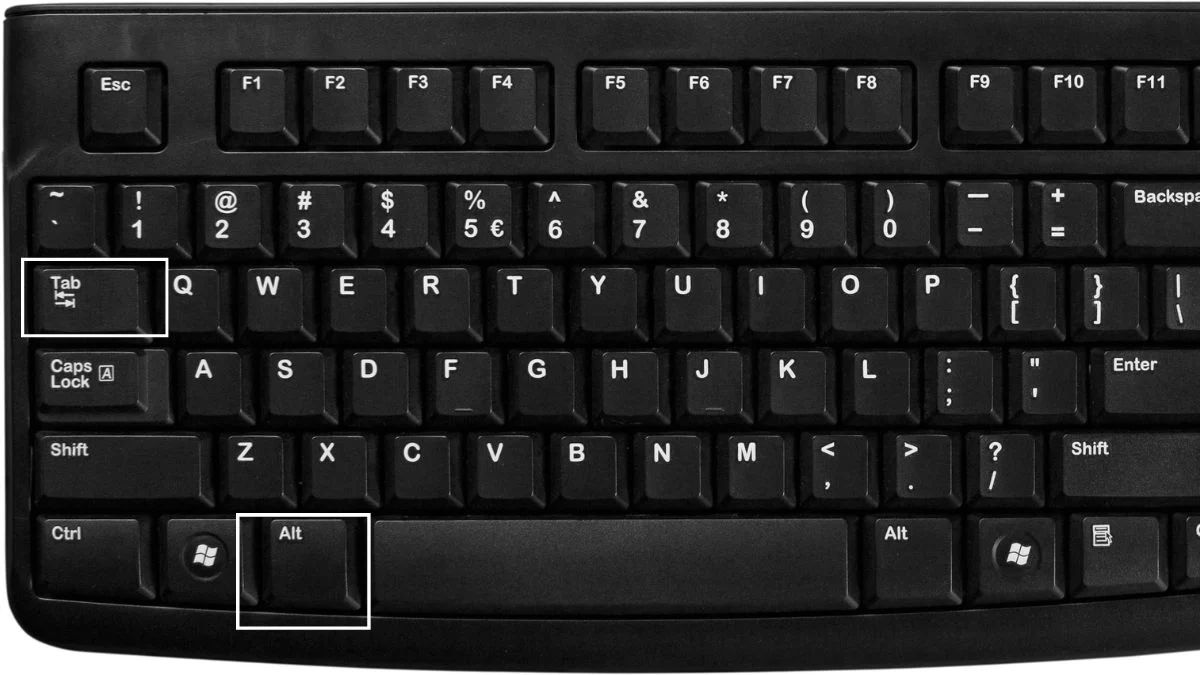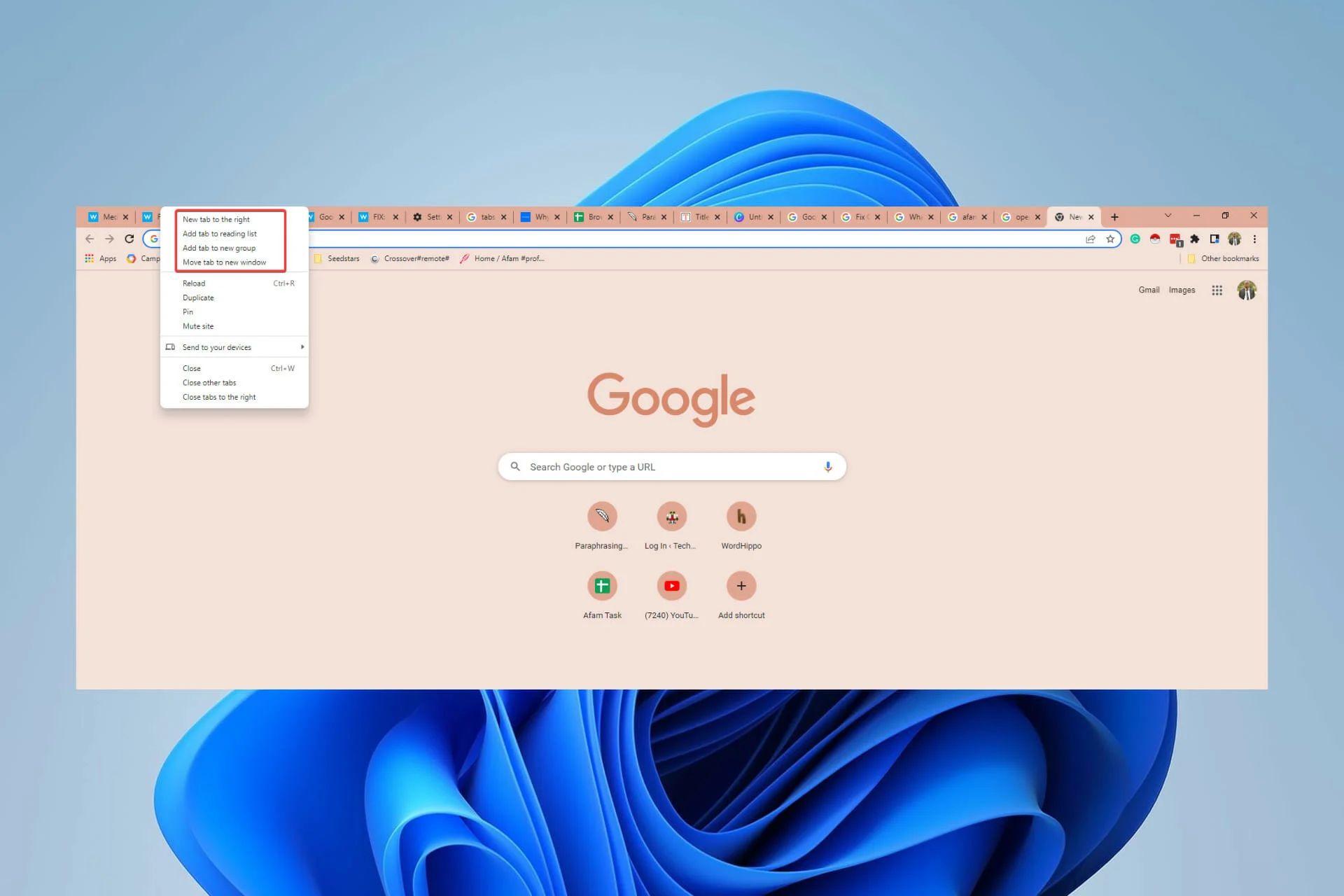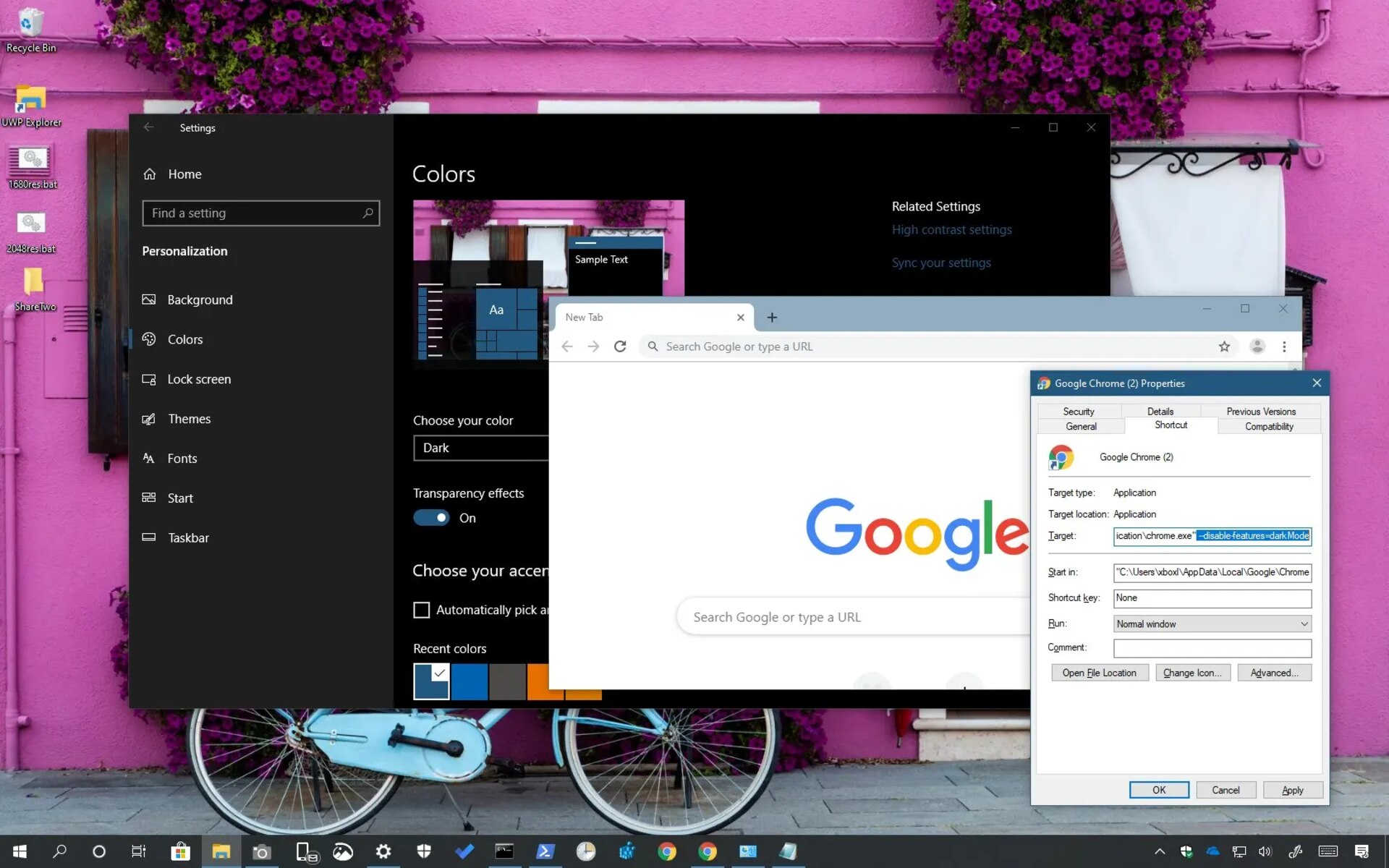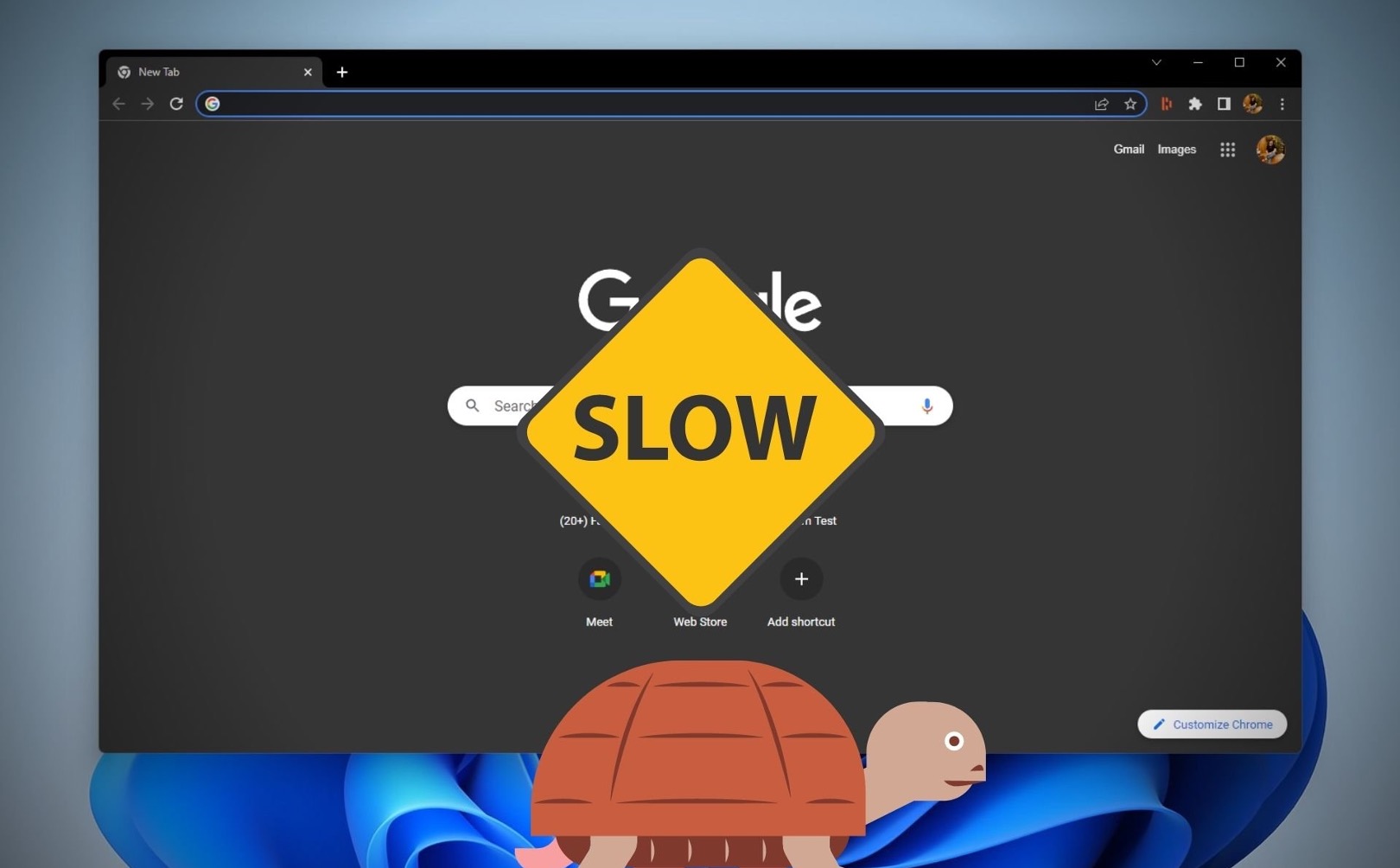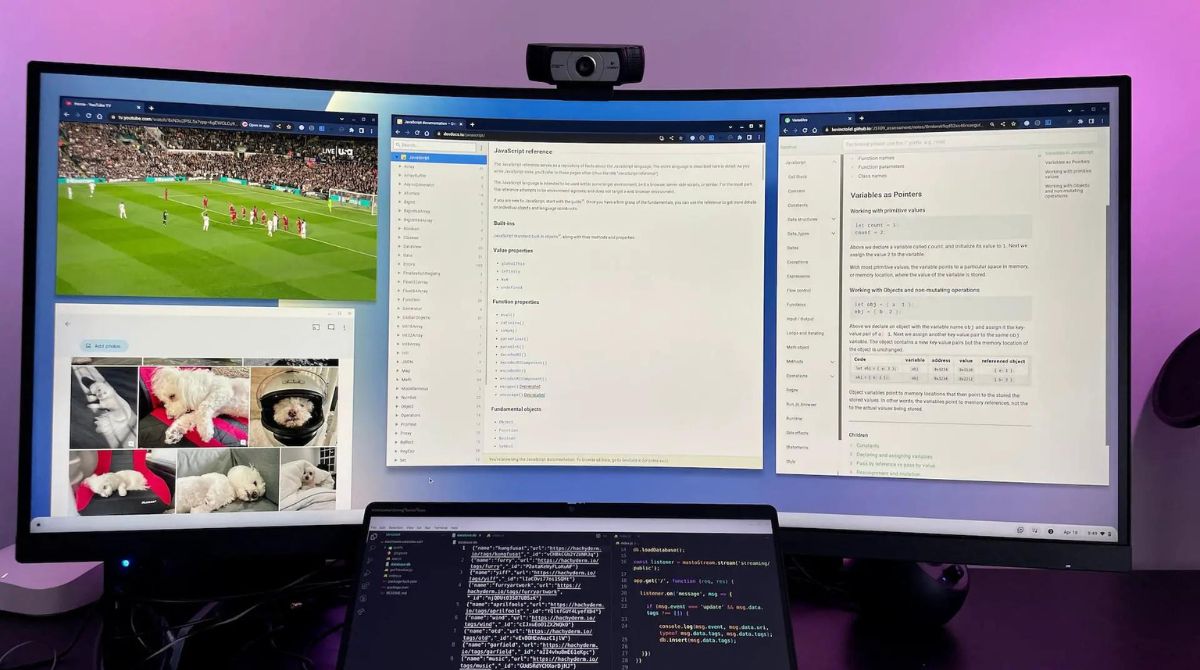Introduction
Navigating between tabs in Google Chrome is a fundamental aspect of the browsing experience. Whether you're conducting research, managing multiple tasks, or simply indulging in online entertainment, the ability to seamlessly switch between tabs can significantly enhance your productivity and overall browsing enjoyment. Fortunately, Chrome offers a variety of methods to accomplish this, catering to diverse user preferences and device capabilities.
Efficient tab management is crucial for streamlining your online activities, allowing you to effortlessly transition between different webpages without losing your train of thought. By mastering the art of tab navigation, you can harness the full potential of Chrome's browsing capabilities, unlocking a smoother and more intuitive online journey.
In this article, we will explore several techniques for switching between tabs in Chrome, ranging from keyboard shortcuts and mouse clicks to touchpad gestures and the innovative tab overview feature. By familiarizing yourself with these methods, you can tailor your tab navigation approach to suit your specific needs and browsing habits. Whether you're a keyboard aficionado, a precision-oriented mouse user, or a fan of touchpad convenience, there's a method that's just right for you.
Join us on this exploration of tab-switching techniques in Chrome, and discover the diverse array of options at your fingertips. By the end of this journey, you'll be equipped with the knowledge and skills to effortlessly navigate between tabs, elevating your browsing experience to new heights. Let's dive in and uncover the secrets to seamless tab management in Google Chrome.
Using Keyboard Shortcuts
Harnessing the power of keyboard shortcuts is a game-changing approach to tab navigation in Google Chrome. These intuitive key combinations offer a swift and efficient way to switch between tabs, catering to users who prefer a hands-on, streamlined browsing experience.
One of the most widely used keyboard shortcuts for tab navigation is Ctrl + Tab. By pressing these keys simultaneously, you can cycle through your open tabs from left to right, seamlessly transitioning between different webpages with remarkable ease. This method is particularly handy when you have numerous tabs open and need to quickly locate a specific page without disrupting your workflow.
For those who prefer a reverse tab-switching sequence, the Ctrl + Shift + Tab shortcut comes to the rescue. By holding down the Ctrl and Shift keys while pressing Tab, you can navigate through your tabs in the opposite direction, providing a versatile alternative for efficient tab management.
In addition to these primary shortcuts, Chrome offers a plethora of keyboard commands to cater to various tab-related tasks. For instance, pressing Ctrl + 1 to Ctrl + 8 allows you to jump directly to the corresponding tab in your lineup, offering a direct route to your preferred webpages. Furthermore, the Ctrl + 9 shortcut swiftly takes you to the last tab, ensuring quick access to recently visited web content.
Moreover, Chrome's keyboard shortcuts extend beyond tab switching, encompassing a wide range of functionalities that can elevate your browsing experience. By familiarizing yourself with these shortcuts, you can navigate through Chrome with unparalleled efficiency, seamlessly transitioning between tabs and optimizing your overall browsing workflow.
Incorporating keyboard shortcuts into your tab navigation routine not only saves time but also enhances your browsing dexterity, empowering you to effortlessly manage your tabs with precision and finesse. Whether you're a multitasking enthusiast or a productivity-driven user, mastering these keyboard shortcuts can revolutionize the way you interact with Chrome, unlocking a world of seamless tab navigation at your fingertips.
Using Mouse Clicks
For users who prefer a more tactile and visual approach to tab navigation, leveraging mouse clicks in Google Chrome offers a familiar and intuitive method to switch between tabs. With a simple click of the mouse, you can effortlessly transition between open webpages, adding a layer of precision and control to your browsing experience.
The most straightforward way to switch between tabs using mouse clicks is by directly clicking on the tab you wish to access. Chrome's tab bar provides a visual lineup of your open tabs, allowing you to visually identify and select the desired webpage with ease. This method is particularly effective when you have a manageable number of tabs open and prefer a visual cue to guide your tab-switching actions.
Furthermore, Chrome introduces a seamless tab navigation feature through the use of the mouse scroll wheel. By hovering your cursor over the tab bar and scrolling with the mouse wheel, you can smoothly cycle through your open tabs, providing a fluid and dynamic approach to tab management. This intuitive method is especially beneficial when you have numerous tabs open and want to navigate through them with precision and speed.
In addition to traditional mouse clicks and scroll wheel navigation, Chrome offers a convenient tab preview feature that enhances the tab-switching experience. By right-clicking on the tab bar, you can access a contextual menu that includes the "Reopen closed tab" option, allowing you to restore recently closed tabs with a simple click. This functionality adds a layer of flexibility to your tab navigation, enabling you to seamlessly retrieve and manage your browsing history with ease.
Moreover, Chrome's mouse-centric tab navigation capabilities extend to the use of browser extensions, which can further enhance your tab-switching experience. With the help of extensions designed for tab management, you can customize and optimize your tab navigation workflow, adding specialized features and functionalities to streamline your browsing activities.
By leveraging mouse clicks and exploring the diverse tab navigation options available in Chrome, you can tailor your browsing experience to align with your preferences and habits. Whether you prefer visual cues, tactile interactions, or dynamic scrolling, Chrome's mouse-centric tab navigation methods offer a versatile and intuitive approach to seamlessly switch between tabs, empowering you to navigate the web with precision and finesse.
Using Touchpad Gestures
In the realm of touch-enabled devices, such as laptops and tablets, the utilization of touchpad gestures has become a prevalent and intuitive method for navigating through various applications, including web browsers like Google Chrome. Leveraging touchpad gestures offers a seamless and tactile approach to tab navigation, catering to users who prefer tactile interactions and fluid movements to switch between tabs.
Google Chrome embraces touchpad gestures as a means to enhance the browsing experience, providing a range of intuitive gestures that enable users to effortlessly navigate through their open tabs. One of the fundamental touchpad gestures for tab management in Chrome involves swiping horizontally with two fingers across the touchpad. This gesture mimics the action of flipping through pages, allowing users to smoothly transition between tabs with a natural and fluid motion.
Furthermore, Chrome's touchpad gesture repertoire extends to the use of pinch-to-zoom functionality, which can be repurposed for tab navigation. By employing a pinching motion with two fingers on the touchpad, users can trigger Chrome's tab overview feature, offering a visual representation of all open tabs and facilitating quick and intuitive tab switching. This gesture-based approach adds a layer of tactile interactivity to tab navigation, empowering users to seamlessly manage their tabs with precision and ease.
In addition to horizontal swiping and pinch-to-zoom gestures, Chrome supports a variety of touchpad gestures that cater to diverse tab navigation preferences. From three-finger swipes to custom gesture mappings, Chrome's touchpad gesture capabilities provide a customizable and intuitive tab-switching experience, allowing users to tailor their browsing interactions to align with their unique preferences and habits.
Moreover, the seamless integration of touchpad gestures into Chrome's tab navigation ecosystem underscores the browser's commitment to providing a versatile and user-centric browsing experience. By embracing touchpad gestures, users can harness the tactile and fluid nature of touch-enabled devices, elevating their tab navigation to new levels of efficiency and convenience.
By embracing touchpad gestures, users can harness the tactile and fluid nature of touch-enabled devices, elevating their tab navigation to new levels of efficiency and convenience. Whether you're navigating through research materials, managing multiple tasks, or simply indulging in online content, Chrome's touchpad gestures offer a tactile and intuitive approach to seamlessly switch between tabs, empowering users to navigate the web with fluidity and finesse.
Using Tab Overview
In the realm of tab management, Google Chrome introduces a powerful and visually engaging feature known as Tab Overview, which revolutionizes the way users navigate and organize their open tabs. This innovative functionality serves as a dynamic and intuitive tool for gaining a comprehensive view of all active tabs, allowing users to seamlessly switch between webpages and streamline their browsing experience.
To access the Tab Overview feature in Chrome, users can employ various methods, including touchpad gestures, keyboard shortcuts, or mouse clicks. One of the most common approaches involves triggering Tab Overview by utilizing the pinch-to-zoom touchpad gesture, enabling users to effortlessly visualize and navigate through their open tabs with a fluid and tactile motion. Additionally, Chrome offers a dedicated keyboard shortcut, allowing users to swiftly access Tab Overview by pressing Ctrl + Shift + E, providing a seamless and efficient means to gain a holistic view of their tab lineup.
Upon entering Tab Overview, users are presented with a visually captivating display of their open tabs, arranged in a streamlined and easily navigable format. This visual representation offers a bird's-eye view of all active webpages, empowering users to quickly identify and select their desired tab with precision and ease. The intuitive nature of Tab Overview transforms tab navigation into a dynamic and visually engaging experience, enhancing users' ability to manage and transition between tabs seamlessly.
Furthermore, Chrome's Tab Overview feature introduces additional functionalities that elevate the tab-switching experience. Users can leverage the search bar within Tab Overview to swiftly locate specific tabs based on titles or content, adding a layer of efficiency to their browsing workflow. Additionally, Chrome allows users to drag and drop tabs within Tab Overview, facilitating effortless tab reordering and organization, further enhancing the user's ability to customize and optimize their tab lineup.
By embracing Tab Overview, users can harness the power of visual organization and intuitive navigation, transforming their tab management into a seamless and visually engaging experience. Whether users are conducting research, managing multiple tasks, or simply exploring the web, Chrome's Tab Overview feature offers a dynamic and efficient approach to seamlessly switch between tabs, empowering users to navigate the web with precision and finesse.
Conclusion
In conclusion, mastering the art of tab navigation in Google Chrome is a transformative journey that empowers users to seamlessly switch between webpages with precision and finesse. By exploring the diverse array of tab-switching techniques, including keyboard shortcuts, mouse clicks, touchpad gestures, and the innovative Tab Overview feature, users can tailor their tab navigation approach to align with their unique preferences and browsing habits.
The utilization of keyboard shortcuts offers a swift and efficient means to cycle through open tabs, catering to users who prefer a hands-on and streamlined browsing experience. Whether it's the Ctrl + Tab combination for forward tab switching or the Ctrl + Shift + Tab shortcut for reverse navigation, keyboard aficionados can elevate their tab management with intuitive key commands.
For those who prefer a tactile and visual approach, leveraging mouse clicks in Chrome provides a familiar and intuitive method to switch between tabs. Whether it's directly clicking on the tab or utilizing the mouse scroll wheel for dynamic tab navigation, Chrome's mouse-centric tab navigation methods offer a versatile and precise approach to seamlessly transition between webpages.
In the realm of touch-enabled devices, such as laptops and tablets, the utilization of touchpad gestures introduces a seamless and tactile approach to tab navigation. From horizontal swiping to pinch-to-zoom gestures, Chrome's touchpad gesture capabilities provide a customizable and intuitive tab-switching experience, empowering users to seamlessly manage their tabs with precision and ease.
Furthermore, Chrome's Tab Overview feature serves as a dynamic and visually engaging tool for gaining a comprehensive view of all active tabs, allowing users to seamlessly switch between webpages and streamline their browsing experience. With its visually captivating display and additional functionalities such as the search bar and tab reordering, Tab Overview transforms tab navigation into a dynamic and visually engaging experience, enhancing users' ability to manage and transition between tabs seamlessly.
By embracing these diverse tab-switching techniques, users can elevate their browsing experience, unlocking a world of seamless tab navigation at their fingertips. Whether users are conducting research, managing multiple tasks, or simply exploring the web, Chrome's versatile tab navigation methods offer a dynamic and efficient approach to seamlessly switch between tabs, empowering users to navigate the web with precision and finesse.










